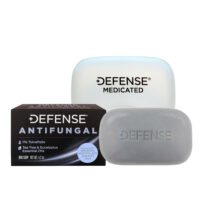Fungal skin infection can appear almost anywhere on the skin. They are often most difficult for those who experience this issue. Fungal skin infections on the front of the face can occur in many different ways. Fortunately, there are methods through which these conditions may be prevented and treated.
What Causes Fungal Skin Infections?
A person can contract a facial fungal infection in many ways. For example, the individual's skin could come into contact with the infected skin of another. Or, another individual's infected skin could touch an item that the person transfers to his or her face. Fungal spores may often be on objects or in the air without people realizing it. Contact causes the initial condition. If the individual does not keep his or her face clean, it is even more likely to become infected.
Common Fungal Skin Infection on the face
One of the most common is ringworm, and it can often be identified as "a flat, spreading ring-shaped lesion". The center of the rash will look like healthy skin, but the edges will often be raised, scaly, and crusty. Ringworm can also occur in facial areas that are hairy like the scalp or beard area. This can cause the hair around it to fall out. Ringworm of the scalp is contagious and usually only affects children, but it can occur in adults as well.
A person can also experience a severe infection called otomycosis, which occurs on the outer ear. Another type of fungal infection, pityriasis versicolor, also known as tinea versicolor, is caused by a yeast and may appear on the face and neck, creating discolored spots on the skin. The latter disorder, according to Austin Community College, "is caused by normal microbiota on human skin" and is not contagious.
Prevention and Treatment of Fungal Skin Infection on the Face
The best way to prevent these conditions is to wash your face regularly, keep the skin dry and clean. Be especially careful of using someone else's items. Borrowing or using personal objects from another individual can cause the spread of any fungal infections the person may have. Because ringworm is especially contagious, using other people's things, especially those who are very intimate and consistently touch the facial area.
If you do encounter a facial infection caused by a fungus, there are many ways in which it can be treated. The Office of Women's Health mentions "antifungal cream" as being a treatment for many of these conditions, and the creams can be both prescription and over-the-counter.
Otomycosis can be treated with antibiotics, and your doctor may need to suction the area if it has become extremely infected. Defense Antifungal Medicated Bar Soap can be safely used for treatment or prevention of fungal skin infections of the face.
Tinea Versicolor can be treated with topical agents like antifungal soaps and lotions. Some people may need to be prescribed antifungal agents for this condition as well. In severe cases, patients may be given oral medications to treat the disorder, but this is rare. It will often take longer for the pigment of the skin to return to normal than it will for the medication to clear the condition itself.
Awareness of Facial Fungal Skin Infection
It is not uncommon for a person to contract or present symptoms of a fungal infection on his or her face. These conditions are not often life-threatening, but in many cases, they can be prevented. Spreading awareness about fungal infection can help others avoid the possibility of experiencing these conditions.
